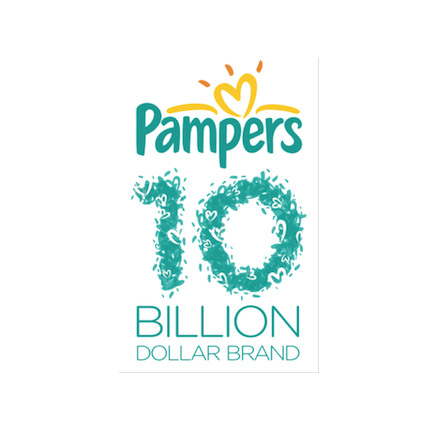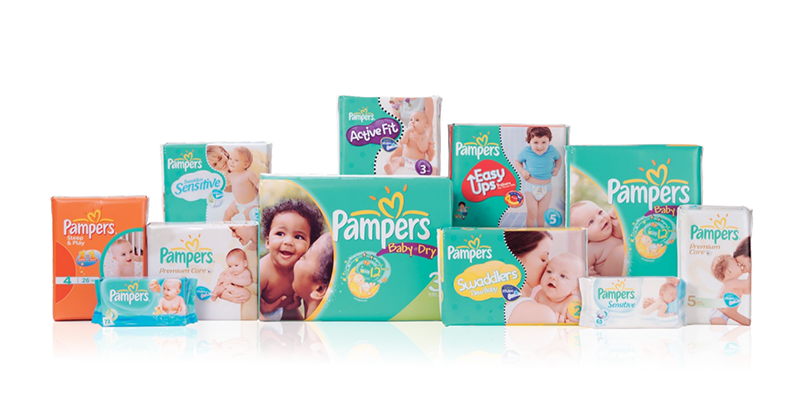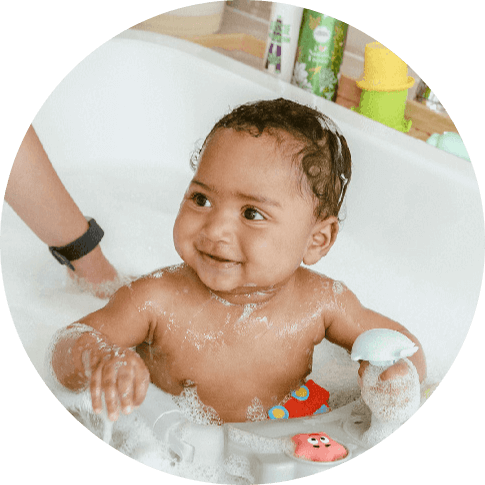27/06/2012
Pampers: The Birth of P&G’s First 10-Billion-Dollar Brand
Sometimes, inspiration comes from the smallest of places or – in this case – the smallest of babies.
That’s what happened more than 55 years ago, when P&G Researcher Vic Mills became frustrated with changing his newborn grandson’s cloth nappy. The process was messy: The nappies fit poorly, soaked too quickly and needed to be laundered too frequently.
Mills decided there must be a better alternative to the cloth nappies, and, in 1956, asked his Research and Development colleagues to work on developing the first high-quality, affordable disposable nappy. At the time, disposable nappies were used in fewer than 1 percent of nappy changes in the United States each year.
Perhaps even Mills could not have imagined where his idea would lead some 50 years later: His work, and the work of his fellow researchers, led to the creation of Pampers, one of the world’s most iconic brands and now the #1 nappy brand worldwide, serving 25 million babies in more than 100 countries.
This month, Pampers – already P&G’s biggest and one of our fast-growing brands – became our first brand to generate more than $10 billion in annual sales.
The accomplishment is no small feat. P&G has 25 Billion-Dollar Brands, which are among some of the world’s best-known household names, including Always, Charmin, Bounty, Olay and Tide. To earn a spot on the prestigious list, brands must generate more than $1 billion in annual sales. SK-II and Vicks became the most recent additions to the Billion-Dollar Brand club in April, but Pampers stands alone as the only member of the prestigious 10-Billion-Dollar club.

“Pampers has earned the trust and loyalty of generations of parents,” said Martin Riant, Group President, Global Baby Care. “It’s become one of the world’s most iconic brands by consistently living its purpose to care for all babies’ happy, healthy development.”
It’s a . . . Pampers
Pampers nappies were born in 1961. In the early years, the brand underwent several redesigns, tests and manufacturing developments. While there were other disposable nappies on the market, the combination of Pampers’ superior performance and reasonable pricing created the disposable nappy category in the United States.
Pampers reached a major milestone in 1964, when its first patent was granted in the United States. Five years later, it became the first nationally sold brand in the United States. Over the next 10 years, Pampers expanded distribution around the world, entering Europe, Asia and Latin America.
Innovating Our Way To Success
Through the decades, Pampers has consistently rolled out nappy innovations that have improved everyday life:
- 1950s: Introduced Z-pleats for stretch and stay-dry lining;
- 1970s: Replaced pins with custom fit fastening tapes, making every nappy fit better with fewer leaks;
- 1980s: Unveiled a revolutionary thinner nappy with super absorbers that kept wetness locked in, allowing babies to crawl, scoot and play more comfortably;
- 1990s: Introduced the first nappy with stretchy sides, and other upgrades to improve dryness and skin care for babies; and
- 2000s: Introduced Baby Stages of Development, a complete line of nappies, training pants and wipes designed for every stage of baby’s development.
Most recent improvements to Pampers, Swaddlers and Cruisers have resulted in our softest and thinnest nappies ever, which use an incredible 40 percent less material and 80 percent less bulk than our 1970s nappies, with both comfort and environmental benefits.
Caring For Babies Everywhere
But there’s much more to the Pampers story than innovation. The success of the Pampers brand is driven by consistently striving to fulfil its purpose to care for all babies’ happy, healthy development.
For example, we know that being a parent is equally challenging and rewarding. That’s why Pampers created the Pampers Village Parenting Panel, a group of professionals selected from all areas of pregnancy and child development fields who provide the latest advice and information to aid the well-being of babies and parents.
Since 2006, Pampers has partnered with UNICEF to help eliminate maternal and neonatal tetanus (MNT), a deadly disease that still claims the life of a newborn every nine minutes. To date, Pampers has raised funds for 300 million vaccines, protecting 100 million mums and their babies. The “1 pack = 1 vaccine” program has helped eliminate MNT in Uganda and Myanmar.
Pampers: My, How You’ve Grown
Today, Pampers are made at nearly 30 manufacturing plants in 25 countries, and are available in more than 100 countries around the world. We reach the smallest kiosks in markets like India and Southeast Asia where we sell packs of one or two nappies and also sell bulk purchases on-line in markets like North America, Europe and Japan.
“Generations of P&Gers have made the Pampers brand a winner across the globe in developed and developing markets behind the P&G strengths of consumer understanding, innovation, branding, great go-to-market execution and global scale,” Riant said. “Five decades of nappy innovation have improved everyday lives of parents and babies. Today, we remain just as focused on deeply understanding consumer needs to ensure that we innovate and improve in everything that we do.”
We think Mr. Mills and the rest of his team would approve.


